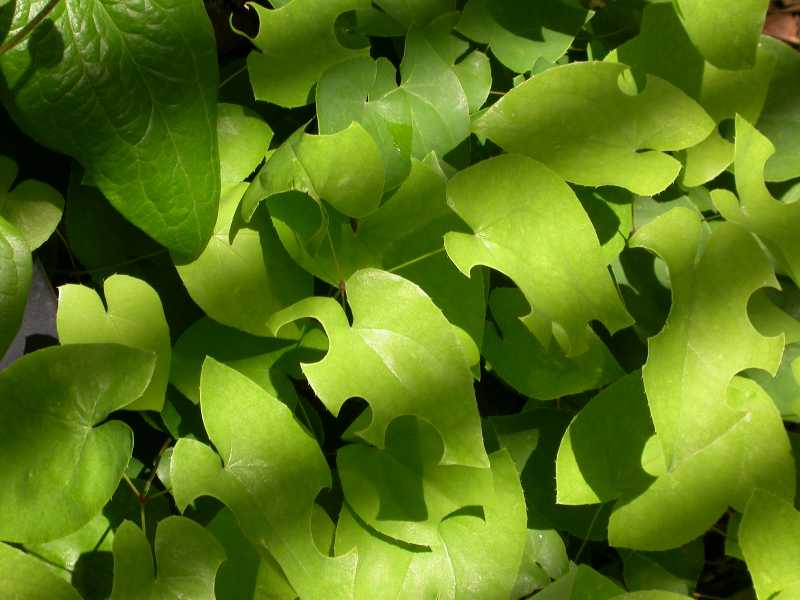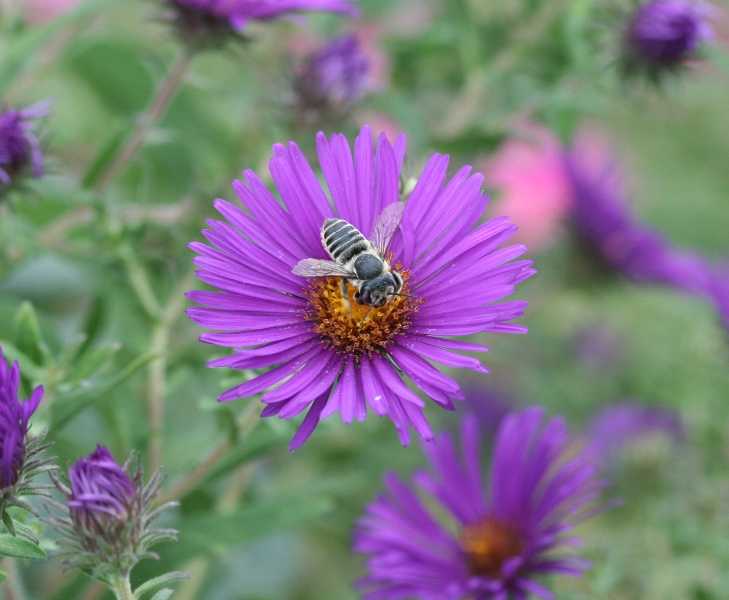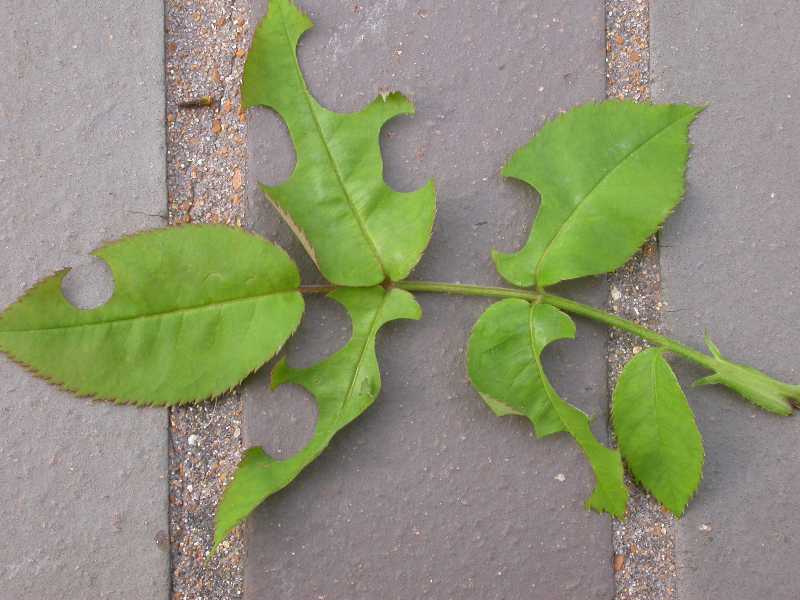 |
Characteristic damage of leafcutter bees (Hymenoptera) along edges of epimedium leaves (Epimedium) |
Leaf cutter bees (Megachile rotundata) are small native bees about ¼ inch long, robust and dark grey with a pollen brush on the underside of the abdomen. They are beneficial for the most part and only cause minor damage to ornamentals such as rose and ash by cutting half moon-shaped disks from the leaves. They are not aggressive but can give a mild sting if handled. They are important plant pollinators.
Symptoms and Diagnosis
The most characteristic symptom of leaf cutter bees are the half-moon shaped holes they make on the edges of leaves as they remove disks of leaf tissue to take back to form nest cells. A leaf may have a single disk removed or several.
Life cycle
Leafcutter bees are solitary bees. They do not form colonies. Females emerge in late spring, mate and form new nests in soft, rotten wood, the pith area of plants, or other existing holes of the correct size. They line the nest with the leaf fragments they collect, provision each cell with a mixture of nectar and pollen, lay an egg and seal the cell. Finished nests may contain a dozen cells or more. The young bees develop and remain in the cell overwintering as a full-grown larvae. There is only one generation a year.
Integrated Pest Management Strategies
1. Prevention. Eliminate breeding sites. Look for rotting boards with sawdust pushed out of excavated tunnels or thick stemmed plants with hollowed openings.
2. Mechanical control. Cover susceptible plants with cheesecloth or other loose netting during periods when leafcutter bees are most active (in late summer). To prevent leafcutter bees from tunneling into rose canes, seal exposed pith as canes are pruned. Place a thumb tack, bit of sealing wax or white glue on the opening.
3. Chemical controls. Insecticides are ineffective for preventing leaf cutting. Remember, leafcutter bees are native, beneficial bees, important as pollinators.
Organic Strategies
Strategies 1 and 2 are strictly organic approaches.
More images:
 |
| A leaf-cutter bee (Hymenoptera) on an aster blossom; leaf-cutter bees are important pollinators. |
|
 |
| Characteristic damage of leafcutter bees (Hymenoptera) along edges of rose leaflets (Rosa) |
|